"BATTISTA ‘PININ’ FARINA founded his company in May 1930. It was launched as a specialist coachbuilder for private customers and small production runs. Right from the start the company undertook commissions from major Italian manufacturers, and at the Paris motor show "

All Hail The Wedge
If any single design concept is synonymous with the 1970s it must be The Wedge. Redolent of an imagined space-age future, the design was conceived at the end of the 1960s by epoch making designers like Giugiaro and Gandini. It wasn’t until the decade that moon shots came and went, however, that they saw the light of day, wrought in steel. Here are six of our favourite wedges.
Japanese company Dome released the Zero concept at the Geneva Motor Show in 1978, It was supposed to be a demonstration of homologation special for a new line of sports cars. However, it failed to pass homologation regulations in Japan. In 1979 the company debuted a revised version of the car that came with U.S standard safety equipment. In the same year, a racing effort was launched at Le Mans but the ‘Zero RL’ failed to finish the race. Not the most successful wedge design, but it looked great anyhow.
The Lancia Stratos Zero was a Bertone design exercise that was showcased at the Geneva show of 1970. The Zero was just 883mm high so drivers would have to lift the windscreen to mount the car. The Stratos HF production car was based on the concept – albeit very loosely.
The Maserati Boomerang concept was presented at the 1972 Geneva Motor Show – sitting next to Giugiaro’s other famous wedge of that year, the Lotus Esprit M70. Its windscreen had an extreme 15 degree windshield rake. Giugiaro’s company ItalDesign apparently used the Boomerang as inspiration when designing the Delorean. In 2005 the original Boomerang concept was sold to a collector at a Christies’s auction for $1,000,000.
Paulo Martin designed the rare and famous Pininfarina-Ferrari Modulo concept- and gained 22 design awards along the way. The extreme design was developed using the Ferrari 512-S racer, and was primarly a showcase for cutting edge build techniques – and of course to flex the flair and passion of Pininfarina to maximum degree.
The original Countach concept was an unadulterated, groundbreaking production design drawn by Gandini for Bertone in 1971. Its striking scissor doors were pilfered from the Alfa Carabo of 1968 – but were actually a practical requirement because of the extreme width of the car. The pure design of the concept was translated loosely into the production first LP400. Soon however, splitters, wings and other safety equipment were added to the mix – watering down this most pure of seventies wedges.
CLICK TO ENLARGE
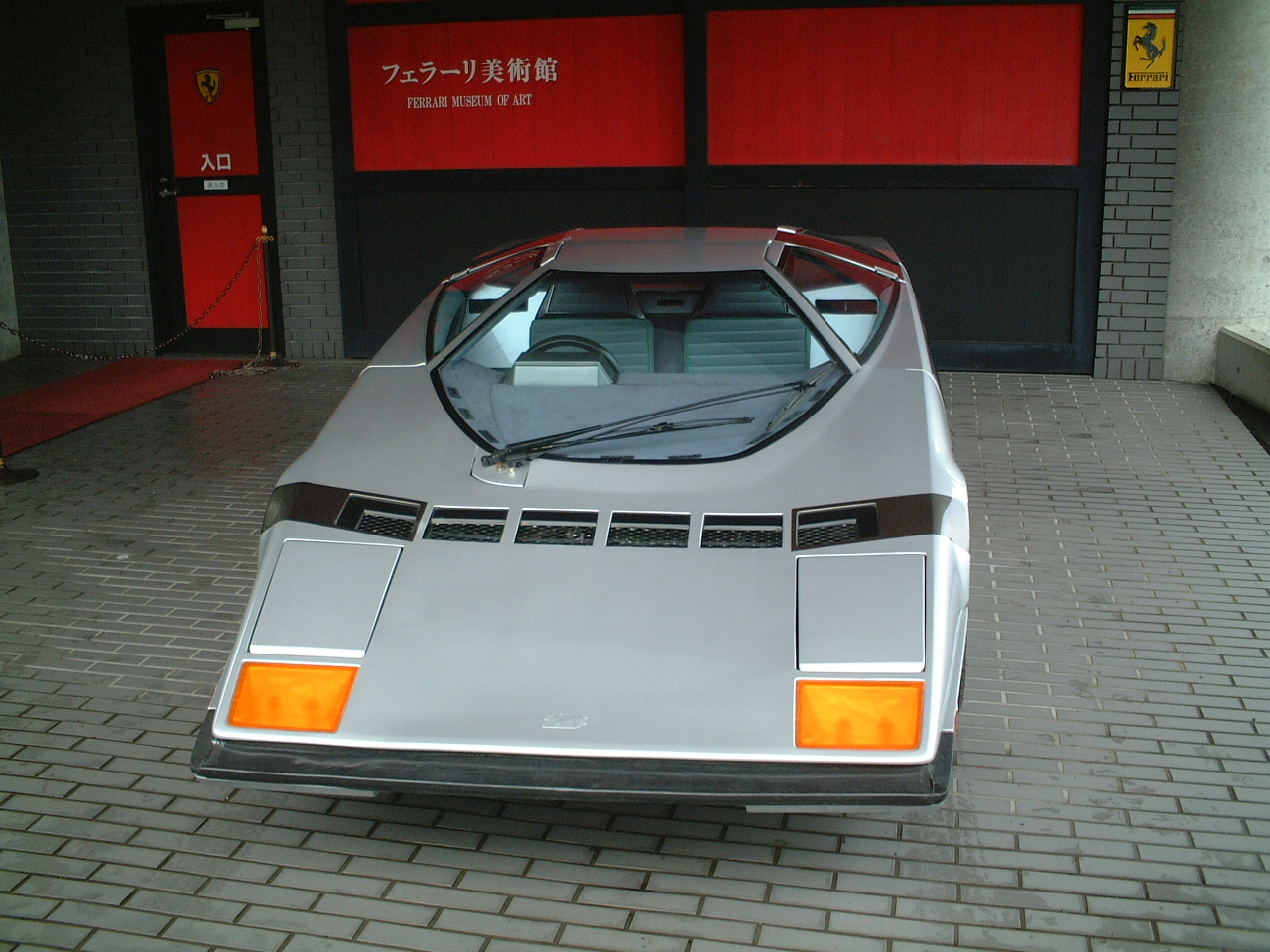
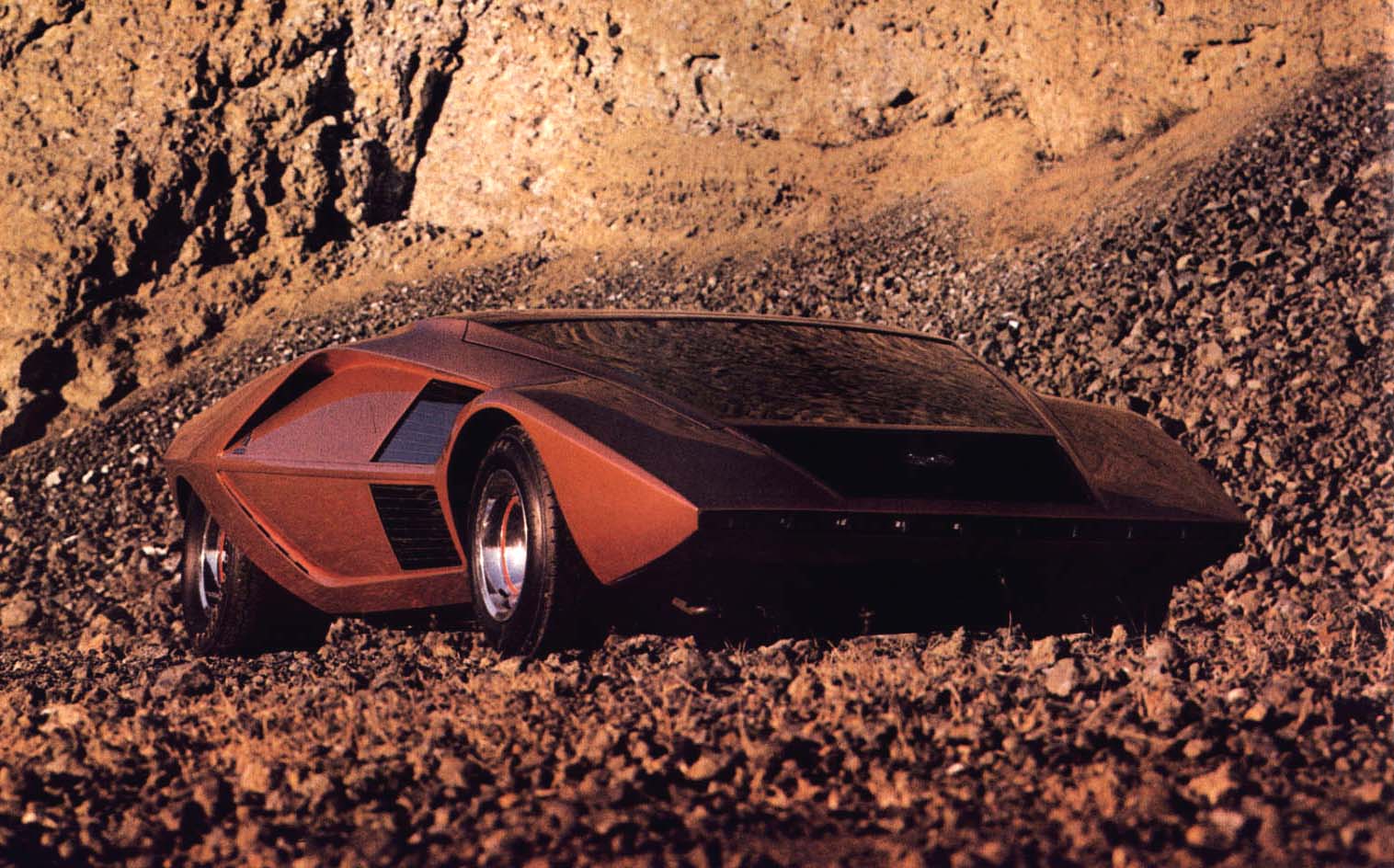
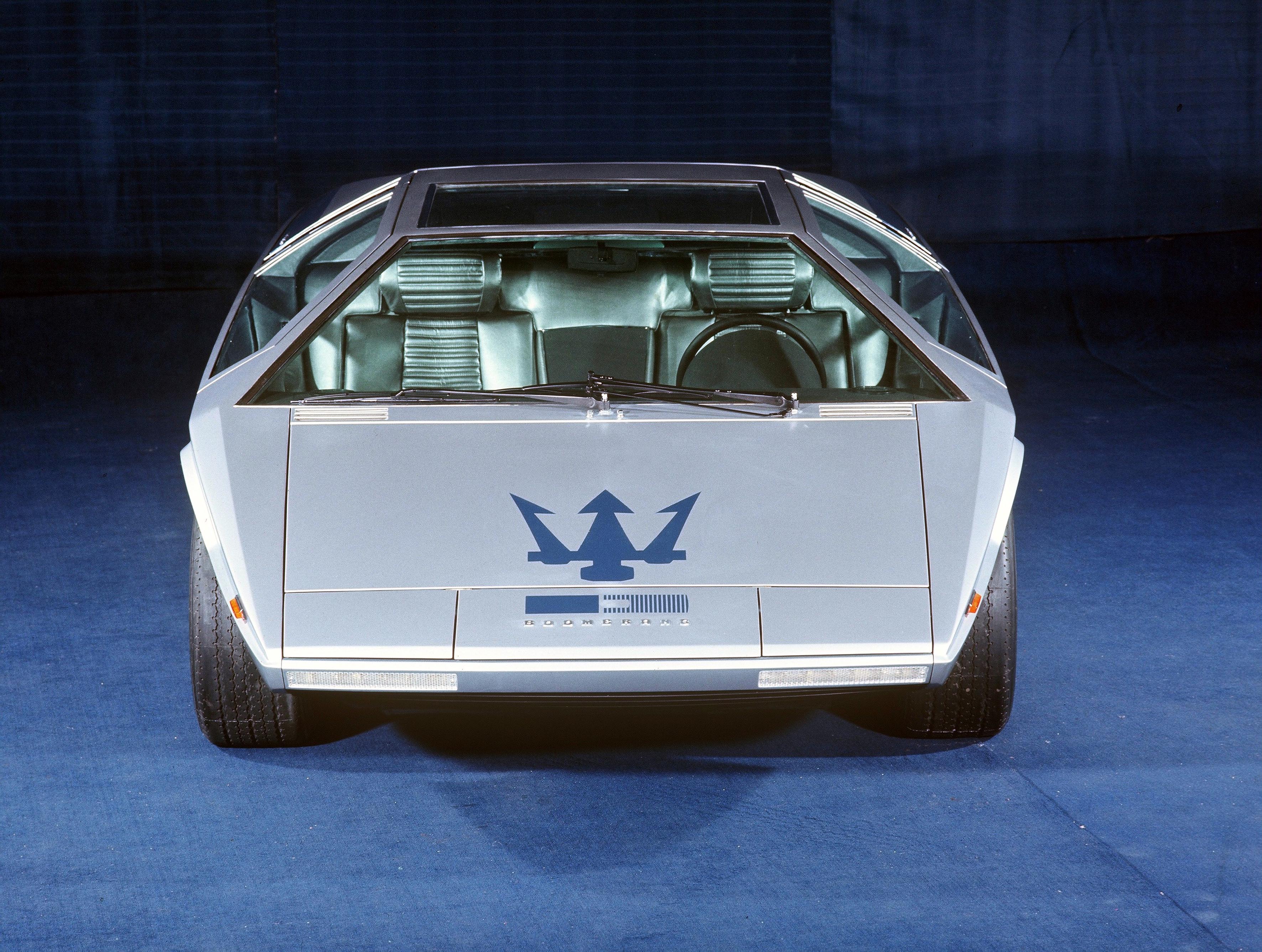
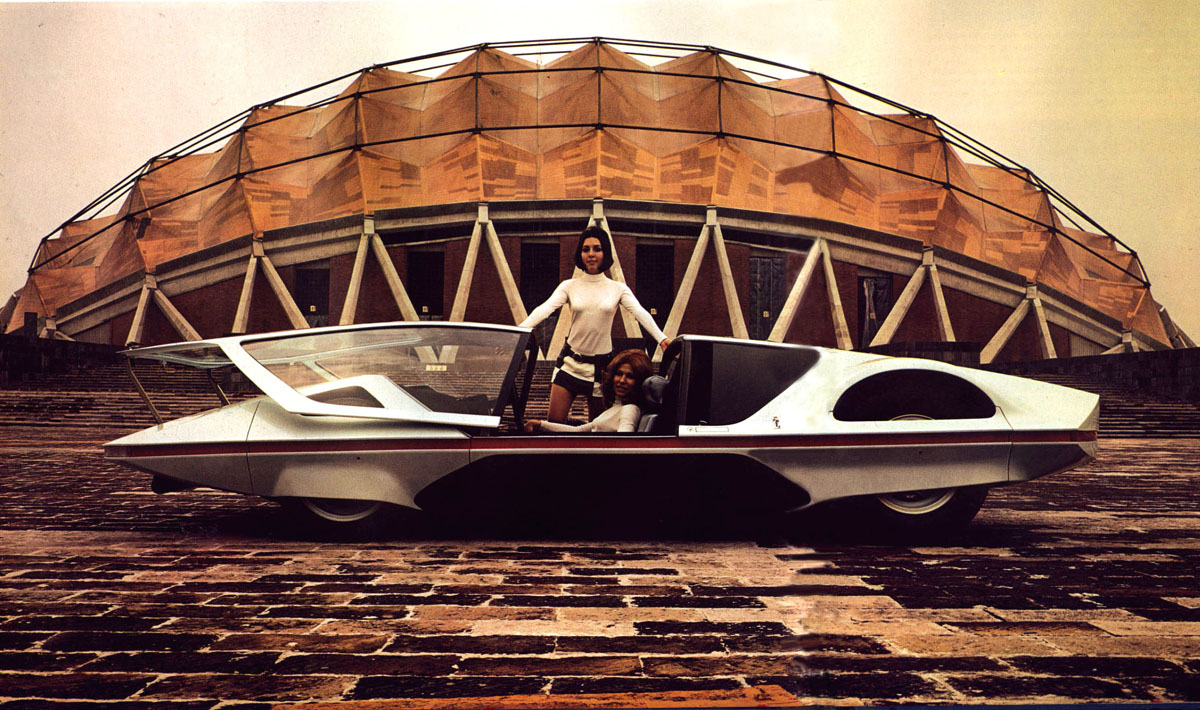
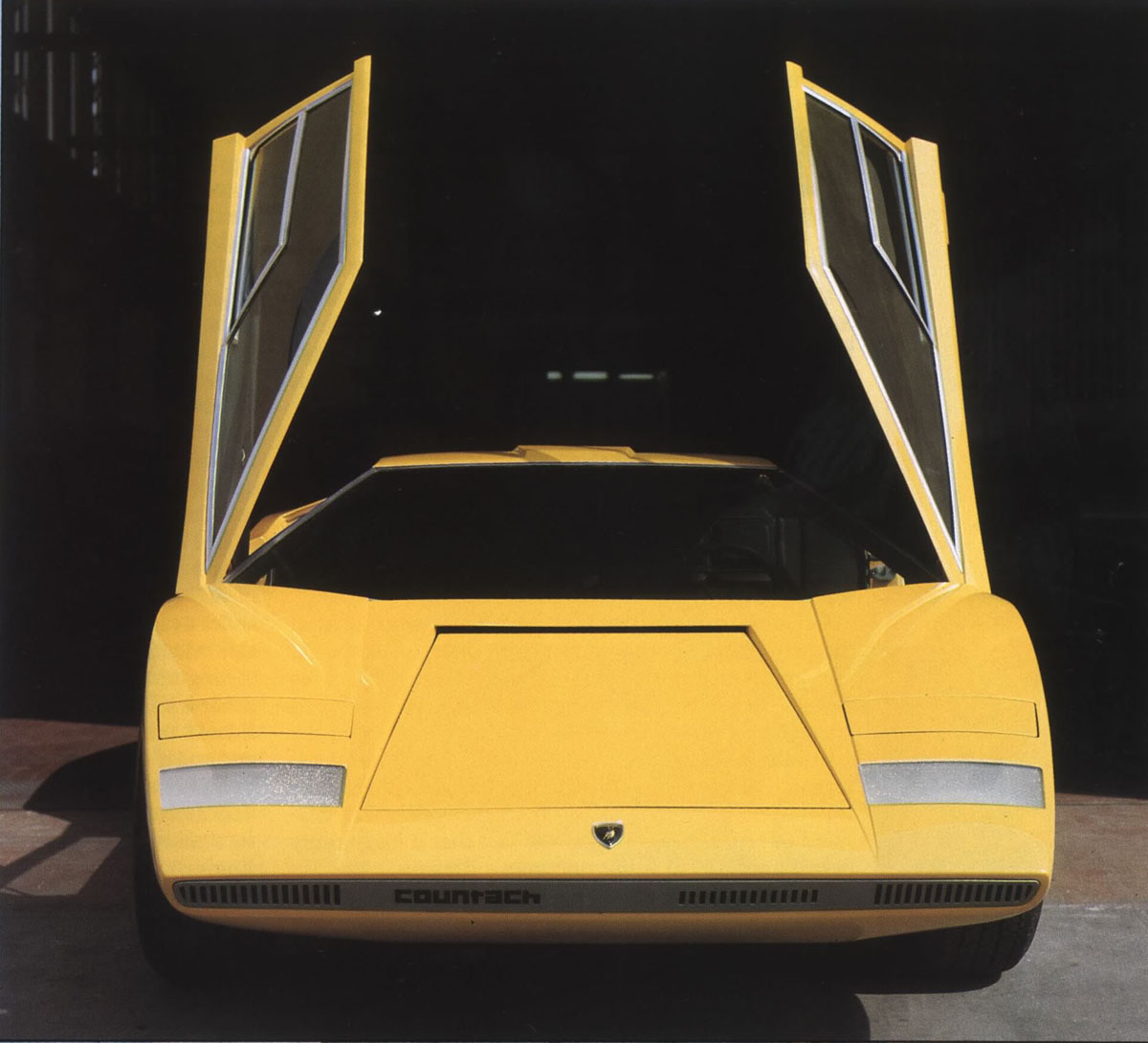









Certain to make a come-back, once a manufacturer gets up the gumption to attempt to start a new (old) trend – some of these cars were fantastically aerodynamically efficient, and had never-bettered Cd figures – and with the future supposedly being all about ultimate fuel efficiency, and electric cars that carry relatively heavy battery packs – “The Future's Bright – The Future's Wedge!”
Aston Martin Bulldog???
A prime example of the breed karnut.
Though whether “The Future” should involve a vehicle stuffed full of dime-store dreck ancilliaries, plucked off the Austin Ambassador production line, is something I feel we should seriously debate, prior to deciding what exactly this “Future” should be. That's assuming that any rational individual has the slightest input in shaping it… Something I'm becoming increasingly skeptical about year by year 🙂
70's wedge would not be complete without mention of the “Lotus Eclat”.
Forget Italian heavy weights, V12's & only two seats. The lotus was faster & handled better than any other wedge in the period, Ok so it wasn't ultra reliable but then it was a fraction of the cost. My yellow example is still a thrill on B roads after 34 years.
How can you not mention the Triumph TR7? Probably the most famous wedge and successful rally winner…